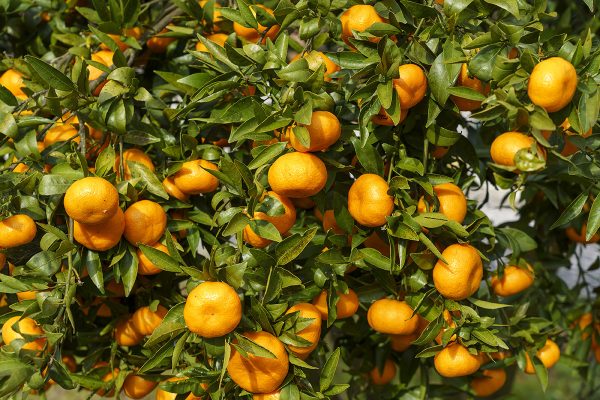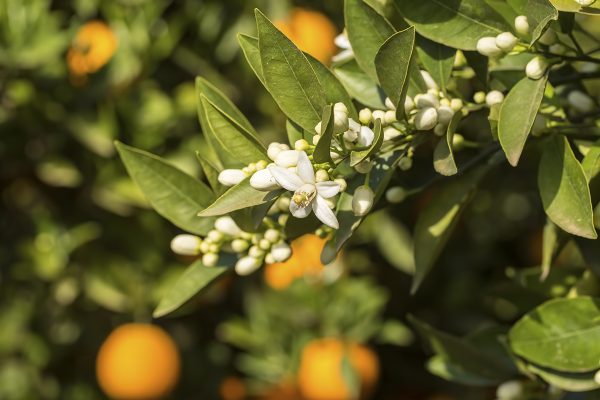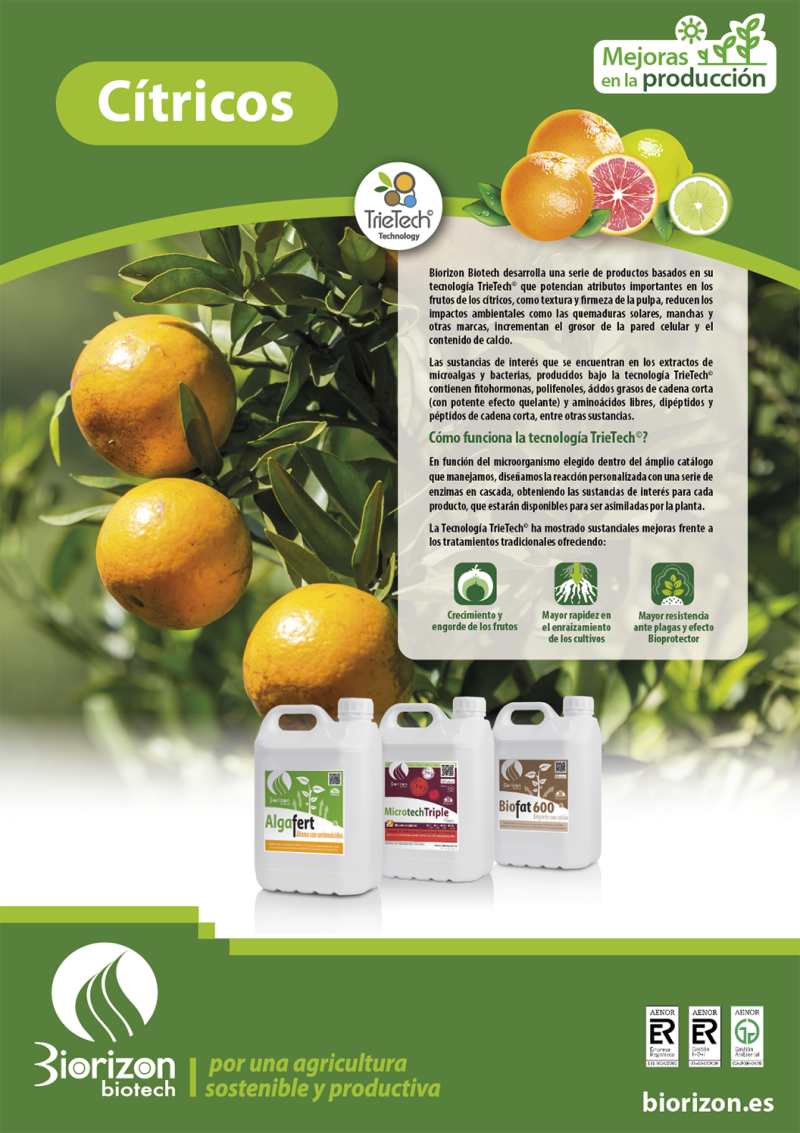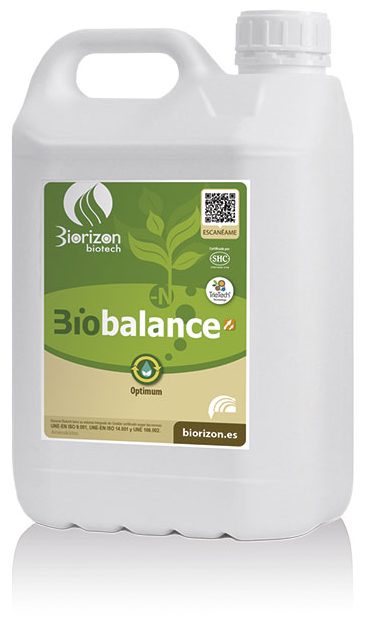

Citrus
Tests and results
CITRUS

Citrus Varieties: Exploring Genetic Diversity
In the vast universe of citrus crops, oranges, mandarins and lemons stand out. Among the oranges, we find the sweet Navel, the juicy Valencia, and the blood oranges. Mandarins, such as Clementine and Satsuma, provide distinctive nuances. On the other hand, lemon growers, led by the well-known Meyer, play a key role in citrus production.
Climate and Soil Requirements: Challenges in the Face of Environmental Change
Citrus fruits are considered to have originated in the tropical and subtropical regions of Asia. Some citrus species have been present in the Mediterranean basin for several centuries. Since these trees come from warmer climates, they do not have a high resistance to frost. To ensure trouble-free growth, it is essential that temperatures do not fall below -2 °C. These trees thrive optimally in moist environments, with constant sun exposure, in fertile soils, and require adequate rainfall or irrigation.
Citrus cultivation, highly dependent on specific climatic conditions, faces imminent challenges. Climate change, with its trend towards extreme temperatures and drought episodes, has a direct impact on plant physiology. Blocked soils, with difficulties in nutrient absorption, demand adaptive strategies to maintain crop health. The identification of resistant varieties and sustainable management practices becomes imperative.

Physiopathologies and Nutritional Disorders: Silent Threats to Crop Production
Citrus pathophysiologies, such as iron chlorosis and root rot, along with nutritional disorders, are ubiquitous challenges. The problem of calcium absorption in citrus fruits, such as mandarin and orange trees, can occur due to various soil conditions and climatic factors. Calcium deficiency in these crops can have significant consequences, such as the appearance of physiological disorders like apical rot or reduced fruit quality. These phenomena compromise crop yield and quality. Accurate fertilization strategies, constant monitoring and specific corrective techniques are essential to mitigate these problems and maintain citrus health throughout the growing season.

Producer Needs and Business Challenges: A Delicate Balance
The citrus grower is at a complex crossroads. Efficient resource management, access to advanced technologies and adaptation to changing market preferences are crucial. Successful crop commercialization involves overcoming barriers such as global competition, climate variability and the growing demand for sustainable agricultural practices.
Postharvest Challenges: Preserving Quality to the Final Consumer
Citrus postharvest presents particular challenges. From ripening control to post-harvest pest management, growers must implement strategies to ensure product quality and freshness at market. Innovations in storage, packaging and transportation technologies are essential to preserve the integrity of citrus from the field to the consumer.
Improving citrus postharvest through proper calcium nutrition and biostimulation is essential to preserve fruit quality and prolong shelf life. Proper nutrition begins at the citrus growth stage. The application of calcium-rich fertilizers during the fruit development period helps to strengthen the cellular structure and prevent physiological disorders, such as apical rot, which can affect postharvest quality. Biostimulants that promote calcium uptake and transport can improve citrus resistance to abiotic stress and strengthen the cell wall. This is crucial to reduce susceptibility to mechanical damage during harvest and postharvest handling.
Citrus

Citrus, belonging to the genus of trees and shrubs of the Rutaceae family, encompasses a wide range of species from small trees to thorny shrubs. Among the prominent ones are lemon, lime, orange, mandarin, grapefruit, citron, kumquat and pamplemusa. These diverse flowering plants are extensively cultivated for both fruit production and ornamental value.
Citrus Varieties: Exploring Genetic Diversity
In the vast universe of citrus crops, oranges, mandarins and lemons stand out. Among the oranges, we find the sweet Navel, the juicy Valencia, and the blood oranges. Mandarins, such as Clementine and Satsuma, provide distinctive nuances. On the other hand, lemon growers, led by the well-known Meyer, play a key role in citrus production.
Climate and Soil Requirements: Challenges in the Face of Environmental Change
Citrus fruits are considered to have originated in the tropical and subtropical regions of Asia. Some citrus species have been present in the Mediterranean basin for several centuries. Since these trees come from warmer climates, they do not have a high resistance to frost. To ensure trouble-free growth, it is essential that temperatures do not fall below -2 °C. These trees thrive optimally in moist environments, with constant sun exposure, in fertile soils, and require adequate rainfall or irrigation.
Citrus cultivation, highly dependent on specific climatic conditions, faces imminent challenges. Climate change, with its trend towards extreme temperatures and drought episodes, has a direct impact on plant physiology. Blocked soils, with difficulties in nutrient absorption, demand adaptive strategies to maintain crop health. The identification of resistant varieties and sustainable management practices becomes imperative.

Physiopathologies and Nutritional Disorders: Silent Threats to Crop Production
Citrus pathophysiologies, such as iron chlorosis and root rot, along with nutritional disorders, are ubiquitous challenges. The problem of calcium absorption in citrus fruits, such as mandarin and orange trees, can occur due to various soil conditions and climatic factors. Calcium deficiency in these crops can have significant consequences, such as the appearance of physiological disorders like apical rot or reduced fruit quality. These phenomena compromise crop yield and quality. Accurate fertilization strategies, constant monitoring and specific corrective techniques are essential to mitigate these problems and maintain citrus health throughout the growing season.
Producer Needs and Business Challenges: A Delicate Balance
The citrus grower is at a complex crossroads. Efficient resource management, access to advanced technologies and adaptation to changing market preferences are crucial. Successful crop commercialization involves overcoming barriers such as global competition, climate variability and the growing demand for sustainable agricultural practices.

Postharvest Challenges: Preserving Quality to the Final Consumer
Citrus postharvest presents particular challenges. From ripening control to post-harvest pest management, growers must implement strategies to ensure product quality and freshness at market. Innovations in storage, packaging and transportation technologies are essential to preserve the integrity of citrus from the field to the consumer.
Improving citrus postharvest through proper calcium nutrition and biostimulation is essential to preserve fruit quality and prolong shelf life. Proper nutrition begins at the citrus growth stage. The application of calcium-rich fertilizers during the fruit development period helps to strengthen the cellular structure and prevent physiological disorders, such as apical rot, which can affect postharvest quality. Biostimulants that promote calcium uptake and transport can improve citrus resistance to abiotic stress and strengthen the cell wall. This is crucial to reduce susceptibility to mechanical damage during harvest and postharvest handling.
Market Challenges and Consumer Expectations: A Dynamic Environment
El mercado de cítricos se enfrenta a cambios significativos. End consumers demand fresh, sustainable and traceable products. Global competition, coupled with the need to adapt to consumer trends, creates a challenging landscape. Transparency in the supply chain and the implementation of ethical agricultural practices are crucial to meet current and future market expectations.
Latest Studies

Biorizon Biotech's solutions are adapted to the different citrus varieties, specific to each geographical area. We focus on the challenges faced by citriculture, related to tolerance to different stresses, correct nutrition in basic soils and crop rotation. Biorizon Biotech's citrus protocol is based on ensuring proper sprouting stimulation through Algafert.
Microtech Triple helps to ensure a correct proportion between flowering and vegetative buds and, together with Algafert, provides a demanding hormonal balance to ensure abundant flowering and subsequent fruit set. In response to nutritional requirements based on calcium assimilation, Biofat 600 will favor the increase of the enzymatic activity of the crop, improving fruit fattening and obtaining greater caliber and homogeneity.


Biorizon Biotech develops a series of products based on its TrieTech© technology that enhance important attributes in citrus fruits, such as texture and firmness of the pulp, reduce environmental impacts such as sunburn, blemishes and other marks, increase cell wall thickness and calcium content. The substances of interest found in the microalgae and bacterial extracts produced under TrieTech© technology contain phytohormones, polyphenols, short-chain fatty acids (with a powerful chelating effect) and free amino acids, dipeptides and short-chain peptides, among other substances.
Latest Studies

















